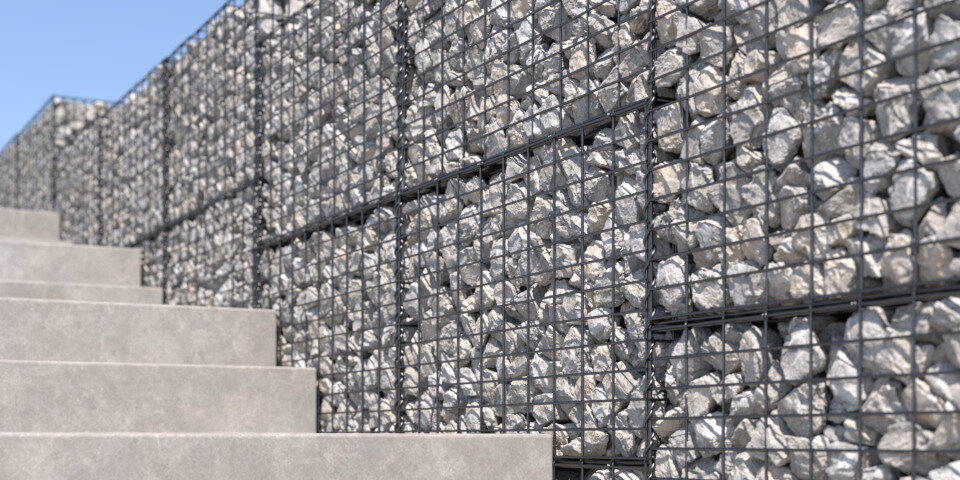Chaos releases V-Ray 6 for SketchUp
Originally posted on 25 August 2022, and updated with details of the final release.
Chaos has released V-Ray 6 for SketchUp.
The update makes the SketchUp edition of the renderer compatible with real-time architectural visualisation tool Enscape, making it possible to render Enscape materials, models and lights in V-Ray.
Other new features include geometry replication system Enmesh, procedural clouds in V-Ray Sky, the option to pause and resume renderering, and support for the V-Ray Distance texture and ACEScg colour space.
The new version was released alongside that of V-Ray 6 for Rhino, which has similar new features.
Compatibility with Enscape reduces the need to rebuild scenes when moving between renderers
The biggest change in V-Ray 6 for SketchUp is interoperability with Enscape, the increasingly popular real-time architectural rendering software with whose developer Chaos merged earlier this year.
The update adds support for “Enscape materials, 3D models and lights” in V-Ray – there isn’t a list in the release notes, so we aren’t sure if all Enscape materials and light types are supported. or just the key ones.
Chaos pitches the change as making it easier to develop the initial look of a scene inside Enscape, then transfer it to V-Ray to take it to the “highest possible level of photorealism”
Updated 5 October 2022: We asked Chaos if there is anything in an Enscape scene that isn’t converted on import to V-Ray. The firm told us:
“Nearly everything that can convert from Enscape to V-Ray does so without user intervention. [Some] V-Ray equivalents have more options … and the V-Ray user will usually want to adjust these to their liking.
“The grass in Enscape can be replaced by V-Ray Fur, but this needs to be done by the V-Ray artist.”

V-Ray Enmesh generates repeating surface geometry without instancing
In addition, the update adds the main features from the other editions of V-Ray 6.
One of the biggest is VRayEnmesh modifier, which covers the surface of an object with repeating geometry, in a way analogous to tiling a texture.
Unlike instancing, no extra memory is used by the repeating geometry – only the source mesh is loaded – making it possible to have “billions of polygons [in a scene] without any impact on the memory consumption”.
Suggested use cases range in scale from fences to chainmail and rattan to the micro-structure of fabrics.
Updates to V-Ray Material, V-Ray Sky and the V-Ray Dome Light
VRayMtl, the standard V-Ray material, gets a new integrated Thin Film layer for creating iridescent materials like soap bubbles and oil spills: effects previously only achievable via an OSL shader.
There is also a new implementation for SSS mode, which should speed up rendering of translucent materials.
In addition, energy compensation has been implemented in the GTR BRDF, which should fix a long-standing issue in which reflections appear unrealistically dark at very low glossiness values.
VRaySky, V-Ray’s physically accurate sky system, gets support for procedural clouds: a feature based on technology from Enscape.
Other lighting changes include the new Finite Dome mode for the V-Ray Dome Light, for fine tuning light projection onto ground surfaces via three new settings: Radius, Projection height and Ground blend settings.
Support for resume rendering, asset tagging, the V-Ray Dirt Texture and ACEScg
In addition, V-Ray for SketchUp now supports several key features previously only available in other editions of the renderer, including the option to pause and resume renders, and to tag assets in the Asset Editor.
The update also adds support for the V-Ray Dirt texture, used to mimic the effect of dirt collecting in the recessed parts of a model, and for the ACEScg colour space used in current visual effects workflows.
Subscriptions now work across eight other host applications
Since the previous release, Chaos has changed its licensing model for V-Ray, discontinuing perpetual licences, but with subscriptions now working across a range of host applications, not one.
There are three new subscription packages: V-Ray Solo, V-Ray Premium and V-Ray Enterprise.
V-Ray Solo subscriptions, which cost $466.80/year, are node-locked; floating V-Ray Premium subscriptions cost $694.80/year. V-Ray Enterprise subscriptions are bulk discounts for buying five or more seats.
Each works with 3ds Max, Cinema 4D, Houdini, Maya, Nuke, Revit, Rhino, SketchUp and Unreal Engine, and includes access to the Chaos Cosmos asset library.
Premium and Enterprise subscriptions also include access to material library Chaos Scans and three other applications: scene-exploration tool Chaos Vantage, newly rebranded image player Chaos Player, and fluid simulation tool Chaos Phoenix, itself also now subscription-only.
Pricing and system requirements
V-Ray 6 for SketchUp is compatible with SketchUp 2019+, running on 64-bit Windows 10+ and macOS 10.14+.
You can find details of Chaos’s new subscription pricing in the story above.
Read an overview of the new features in V-Ray 6 for SketchUp on the product website
Read a full list of new features in V-Ray 6 for SketchUp in the online release notes
